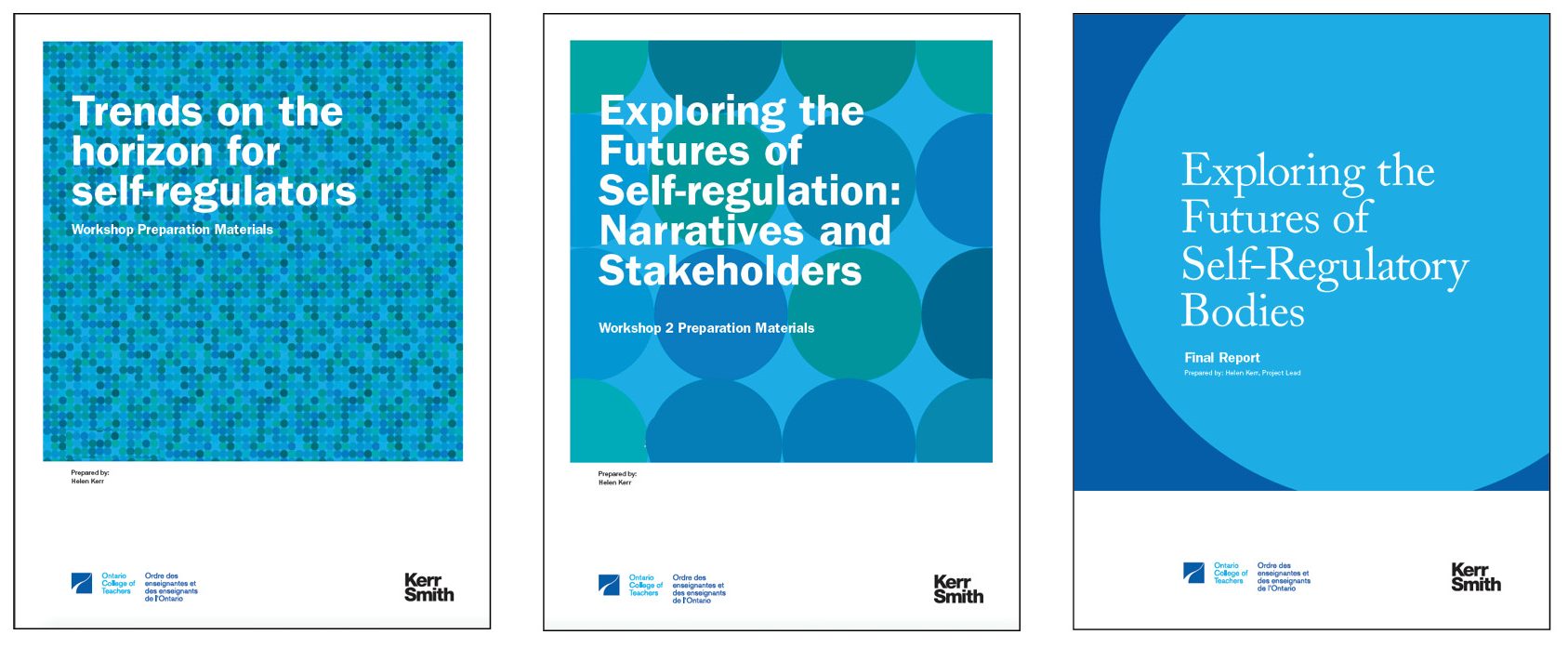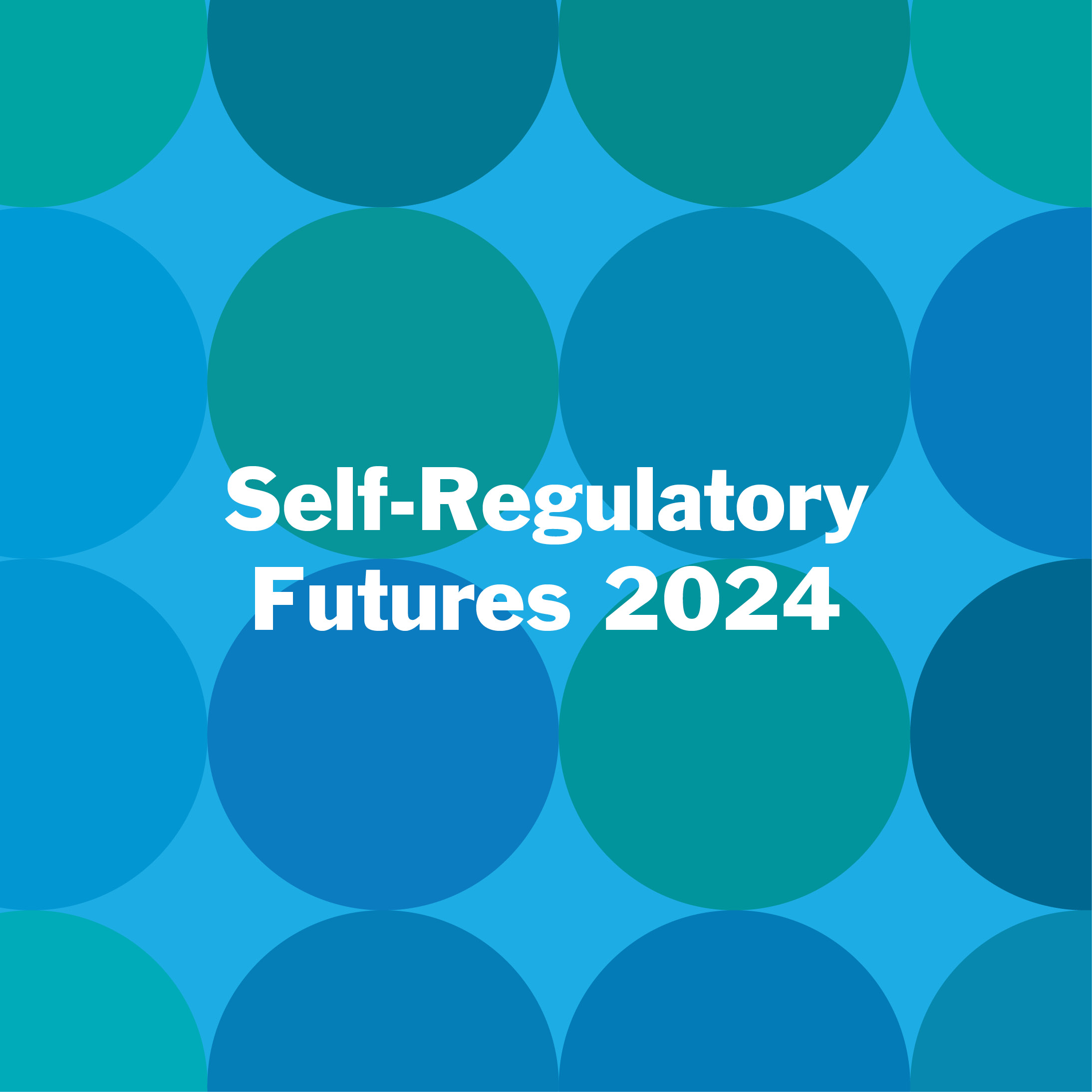[one_half]
Foresight
The Future of Professional Self-Regulatory Bodies
The world of self-regulation is evolving as rapid, systemic and turbulent changes impact professionals and the bodies that certify, discipline and set standards for their practice.

Scope of work
- Horizon Scan
- Scenario planning
- Trends impact analysis
- Engagement
- Strategic implications
[supsystic-social-sharing id='1']
[/one_half]
[one_half_last]
The Ontario College of Teachers is the regulatory body that licenses, governs and regulates 190,000 teachers in the province of Ontario. The world of self-regulation is evolving as rapid, systemic and turbulent changes impact professionals and the bodies that certify, discipline and set standards for their practice. The Ontario College of Teachers commissioned KerrSmith to describe possible, plausible futures as a tool for resilient planning and strategic visioning.
With a view to better understanding the context of self-regulatory bodies, the KerrSmith team conducted a scan across diverse news and information sources (from both the public and private sectors), looking for “weak signals” of discontinuous change. Analysis of the research findings, trends and drivers of change were then collected, organized and prioritized.
In order to understand the needs of self-regulatory bodies, we conducted a series of interview with thought leaders across the globe. In addition to validating our initial research findings, interviews helped to raise new issues for consideration. Armed with a deeper understanding of needs and emergent regulatory issues, the team created three human centred narratives to position alternative scenarios of both positive and negative possibilities. These were accompanied by representative stakeholder personas, which explored the needs of professionals, regulators and the public in each scenario.
Analysis of the possible human centred narratives in a workshop with representatives from various sectors brought forth a wide range of potential implications that could affect the self-regulator space quite immediately.
Finally, we delivered a 103 page document that encompassed an extensive trends and driver report, human centered narratives and personas, backcasts, future systems maps and detailed implications for the broad and multi-disciplinary professional self-regulatory sector. The final report formed the basis of a one hour presentation at the College’s international conference on regulation, which takes place in Toronto every four years.
[/one_half_last]




No Comments.